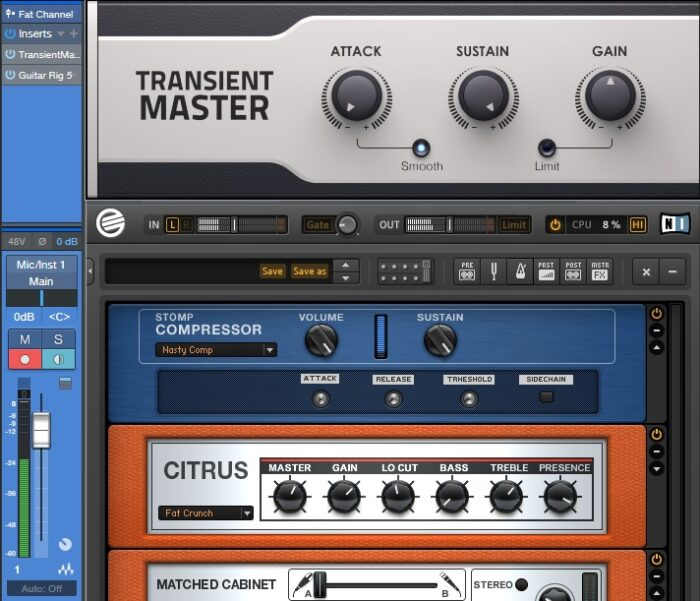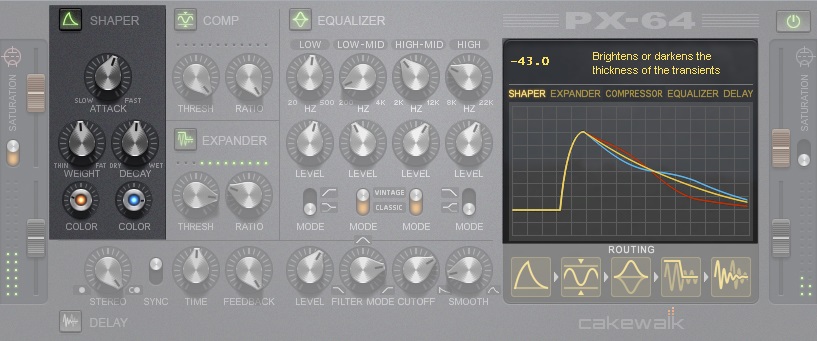Transient shapers have tended to fly under the radar a bit, but there’s increasing interest in using them to enhance mixes
A transient shaper is a specialized dynamics processor that affects a signal’s attack, but unlike a compressor or limiter, doesn’t necessarily change the overall signal level. It can either emphasize or soften the initial transient; there’s typically a single control where the center position does nothing, clockwise sharpens the attack by amplifying it, and counter-clockwise softens the attack by ramping up to the full level over time. Some transient shapers also include a sustain control that brings up the average level after the initial decay, which turns the transient shaper into something more like a compressor that separates the initial attack and sustain elements.
TRANSIENT SHAPER CAUTIONS
Transient shapers may seem easy to use, but a misadjustment can make the sound worse instead of better. Here are two important considerations when using transient shapers.
- Emphasizing the attack can exceed the available headroom if the signal is already close to the maximum headroom. Native Instruments’ Transient Master includes a limiter to help with this, but not all transient shapers do.
- Unless there’s a smooth transition from the attack to the main body of the sound, the two can sound separated. You can usually fix this with proper control adjustments.
TRANSIENT SHAPER APPLICATIONS
Transient shaping has many uses for mixing.
- Reduce the attack on electric guitars prior to an amp sim. This can minimize the non-tonal “splash” of pick noise that often produces a harsh-sounding initial transient.

- Emphasize the attack of drums and other percussion instruments so they stand out in the mix without level increases.
- Reduce the attack of drums that are too “aggressive.” For example you might want the kick and snare to stand out, while the toms sit back more in the mix.
- Soften the attack of steel-string acoustic guitars if the attack is too overbearing compared to the guitar sound itself.
- Lower the sustain to reduce room sound or reverb effects.
- Reduce attack to place an instrument more in back of a mix, or increase attack and reduce sustain to bring the sound more to the mix’s forefront.
- Bring up the sustain to make sounds seem bigger.
- With bass, transient shaping is extremely useful. Emphasizing the attack can give more punch so the bass stands out more in a track (even when mixed fairly low). Increasing the sustain gives a fatter, more even sound.
Transient shapers can help emphasize or de-emphasize sounds in the mix without the traditional level and dynamics controls. If you haven’t found out how helpful transient shaping can be, give it a shot.
